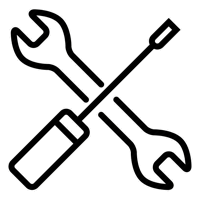How to Choose the Right Drain and Sewer Inspection Camera: A Complete Guide for Plumbing, Civil, and Industrial Applications
Author: James Osborne Date Posted:12 May 2025
How to Choose the Right Drain and Sewer Inspection Camera: A Complete Guide for Plumbing, Civil, and Industrial Applications
Drain and sewer inspection cameras are essential tools for professionals in plumbing, civil construction, maintenance, and infrastructure management. With underground infrastructure becoming increasingly complex and aging drainage systems causing costly issues, visual inspection is no longer a luxury—it’s a necessity.
Whether you’re diagnosing a residential blockage, inspecting municipal stormwater lines, or mapping commercial plumbing, the right pipe inspection system can save you hours of labour and thousands in damage prevention.
In this in-depth guide, we’ll cover:
- ✅ What a drain inspection camera is
- ✅ Applications and industries that use them
- ✅ Key features to consider before buying
- ✅ Types of camera systems available
- ✅ Common pitfalls to avoid
- ✅ The Testrix range of drain and sewer cameras—reviewed
What Is a Drain or Sewer Inspection Camera?
A drain or sewer inspection camera (also called a pipe inspection camera or drain camera) is a high-resolution waterproof camera mounted on a flexible cable that can be inserted into pipelines, drains, and underground utilities. It transmits live footage to a display screen, allowing users to locate and diagnose blockages, cracks, collapses, and other issues without excavation.
Most systems include:
- A reel or pushrod for deploying the camera
- A camera head (sometimes pan & tilt)
- An LED light source
- A monitor or recording device
- Optional features like locators, text overlays, and USB/SD recording
Applications and Industries That Use Drain Cameras
Drain inspection systems are used in many industries:
1. Plumbing & Residential Maintenance
- Diagnosing blockages in toilets, sinks, and floor drains
- Pre-purchase inspections
- Finding tree root intrusion
2. Civil Construction & Infrastructure
- Stormwater and sewer asset inspections
- Compliance testing
- Mapping existing underground pipes
3. Facility & Property Management
- Preventative maintenance of drainage systems
- Emergency blockages in commercial buildings
4. Municipal & Utility Work
- Sewer and wastewater treatment inspections
- Locating line faults or illegal connections
- Infrastructure assessment and documentation
Key Features to Consider When Buying a Pipe Inspection Camera
1. Cable Length and Type
Choose based on your typical job depth:
- 20-50m: Great for domestic and light commercial work
- 40-80m+: Needed for larger industrial or municipal jobs
Pushrod flexibility also matters—too stiff and it won't navigate bends; too soft and it won’t push far.
Testrix Bluebird series offers lengths from 30m to 140m with highly durable pushrods suitable for commercial-grade use.
2. Camera Head Specifications
Look for:
- Resolution: HD (720p+) ensures you spot fine cracks or damage
- Field of View (FOV): Wider angles capture more of the pipe’s interior
- Size: Ensure the head fits your smallest common pipe
- Lighting: Powerful LEDs are essential in dark pipelines
Some premium models feature:
- Self-levelling cameras to maintain upright image orientation
- Pan & Tilt heads for full control and better diagnostics
The Testrix Bluebird MIDI-80HD offers full HD (1080p) resolution with pan and tilt, ideal for industrial and municipal inspections.
3. Monitor & Recording Capabilities
Look for:
- Screen size: 7"–15” is typical
- Brightness: High-lumen displays improve sunlight readability
- Recording options: USB, SD card, or internal storage
- Overlay capabilities: Add voice, text, date/time stamps
Testrix systems come with rugged control units featuring sun-readable displays, video recording, and integrated keyboard/text overlay support.
4. Location and Sonde Transmitter
Being able to locate the camera head underground is essential for pinpointing defects. Systems with built-in 512Hz sonde transmitters allow you to trace the camera with a locator above ground.
The Testrix Bluebird series includes built-in sonde transmitters, ideal for integration with Radiodetection and most other locators.
5. Durability and Build Quality
Cameras and reels must withstand:
- Harsh environments
- Dirty and wet conditions
- Rough handling onsite
Look for:
- IP68-rated waterproofing
- Stainless steel camera housings
- Reinforced reel casings
Testrix inspection cameras are built for Australian conditions—impact-resistant, weatherproof, and field-tested.
6. Power Supply and Portability
Some systems run on AC power, while others use battery packs, offering flexibility onsite. For remote or off-grid locations, portability is key.
The Testrix Bluebird MIDI 80HD offers both AC and DC power options, as do all Testrix pipe inspection camera systems, including rechargeable lithium-ion battery packs for full-day fieldwork.
7. Accessories and Expandability
Check for:
- Skids and centering devices for larger pipes
- Keyboard or mic for annotations
- Locators, and pipe mapping add-ons
Testrix systems are modular and compatible with many industry-standard accessories, making them ideal for growing businesses.
Types of Drain and Sewer Cameras
1. Push Rod Cameras
- Most common
- Best for straight pipelines and bends up to 90°
- Cost-effective for general plumbing and maintenance
Best Use Case: Residential or light commercial
The Testrix Bluebird MINI-HD is a compact pushrod system perfect for residential plumbers.
2. Pan & Tilt Cameras
- Allow full visual control of the pipe interior
- Ideal for documenting lateral connections, cracks, or infiltration
Best Use Case: Municipal sewer inspections, civil construction
The Testrix Bluebird MIDI-80HD offers high-definition pan & tilt functionality in an 80m system for mid range pipes.
3. Crawler Cameras
- Motorised and steerable
- Designed for large-diameter pipes (300mm+)
- Extremely high resolution with advanced documentation features
Best Use Case: Infrastructure asset managers and councils
Now available in the Testrix range, crawler systems may be an investment consideration for long pipes (250m upwards).
Common Mistakes to Avoid
❌ Buying a system that’s too short
Choose a camera with enough cable for your typical job—especially in commercial or council work.
❌ Ignoring locator compatibility
If you plan to dig or map, ensure your camera has a built-in sonde and is compatible with industry-standard locators.
❌ Skipping on image quality
Low-resolution footage can lead to misdiagnosis—always opt for HD where budget allows.
❌ Not planning for future growth
Buying an ultra-basic system may be cheaper, but you’ll outgrow it fast. A scalable system (like those from Testrix) offers better long-term value.
Why Choose Testrix for Drain and Sewer Cameras?
Testrix is an Australian leader in inspection and diagnostic tools for plumbing, civil, and industrial professionals. Their camera systems are known for rugged reliability, advanced imaging, and real-world usability.
Here’s a comparison of popular models:
|
Model |
Cable Length |
Camera Head |
Pan/Tilt |
Resolution |
Sonde |
Monitor |
Power |
|
Testrix Bluebird MINI-HD |
30m |
Self-levelling (25mm) |
No |
1080p FHD |
Yes |
10.1” |
Battery / Mains |
|
Testrix Bluebird MIDI-80HD |
80m |
Pan & Tilt (28mm) |
Yes |
1080p FHD |
Yes |
10.1” |
Battery / Mains |
|
Testrix Bluebird 60HD |
60m to 120m |
Pan & Tilt (65mm) |
Yes |
1080p FHD |
Yes |
10.1” |
Battery / Mains |
Ideal Use Cases for Each Testrix Camera
- Residential Plumbers: Testrix Bluebird MINI-HD for quick, affordable, and reliable blockage diagnostics
- Civil & Commercial Projects: Testrix Bluebird MIDI 80HD with pan & tilt, ideal for complex or long-distance pipelines
- Council & Industrial Inspection: Testrix Bluebird 60HD for longer, larger pipes and better visual coverage
Final Buying Checklist
Before purchasing your pipe inspection camera, ask yourself:
- What length and diameter of pipe do I typically inspect?
- Do I need pan & tilt control or will a fixed head suffice?
- Will I need to locate the camera underground?
- Do I require HD footage for documentation or reporting?
- Will I operate the system in remote areas?
- Do I need a scalable, future-proof system?
If the answer to any of the above is yes, the Testrix range likely has a model to suit your exact needs.
Where to Buy
All Testrix drain and sewer inspection cameras are available at Testrix with expert support, detailed specifications, and Australia-wide delivery. Their team is always available to help match you with the right system based on your needs and industry.
Conclusion
Choosing the right drain and sewer inspection camera is about more than just cable length and resolution. You’re investing in a tool that helps safeguard infrastructure, diagnose costly issues early, and deliver professional-grade service. By carefully considering your needs and choosing a proven, Australian-built solution like the Testrix Bluebird range, you ensure long-term reliability, adaptability, and accuracy.




